Support to Science Support Office
Contents of this page
| VMO: Virtual Meteor Observatory |
| CILBO/MRG: Meteor Research Group |
| OGS (Optical Ground Station) spectrograph |
VMO: Virtual Meteor Observatory
The Virtual Meteor Observatory (VMO) contains scientific observations of shooting stars (meteors) passing through the atmosphere of Earth, gathered by observers across the world. The VMO database uses standard data formats and protocols, which means that it is compatible with other software tools and databases.
The VMO project aims to facilitate collaboration between different meteor groups, by giving meteor researchers an easy way to query and retrieve data available to the worldwide community.
The VMO website is linked to this database and provides functionality to browse the meteor catalogue and, most importantly, it has functionality to cross-correlate observations from different camera locations. This allows observers to compute meteor orbits and trajectories.
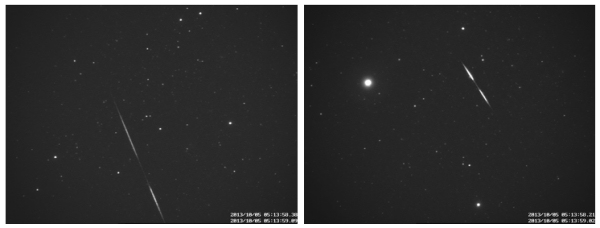 |
|
| Meteor, with peak magnitude of about 1 mag, recorded 5 October 2013 at 05:13:58 UTC, from ICC7 on Tenerife (left) and ICC9 on La Palma (right). Credit: ESA |
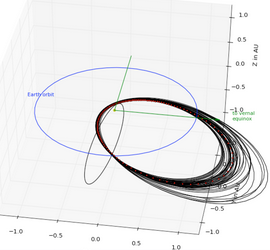 |
| The plot shows all meteors marked as Geminids. The blue line is the orbit of the Earth. Note: that there is one obvious non-Geminid there. |
CILBO/MRG: Meteor Research Group activities
 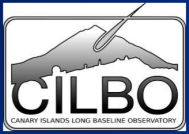 |
The Meteor Research Group (MRG) in the ESA Science Directorate operates the Canary Islands Long-Baseline Observatory (CILBO). This is a two-station, automated system, with one station located on Tenerife and one on La Palma, each of which hosts an image-intensified video camera observing the same volume in the atmosphere during the night.
The setup is completely automated, i.e. the system switches itself on when it is dark and the weather conditions are favourable. The meteor detection software is started at sunset, and stopped at sunrise. The meteors detection data is sent each morning via ftp to a central server, along with a summary of the night's observations and environmental conditions.
On the Tenerife station, one camera is equipped with a spectral grating to record the meteor spectra of the brightest meteors.
For more information please refer to this publication:
http://www.lpi.usra.edu/meetings/acm2012/pdf/6140.pdf
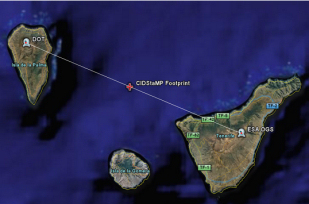 |
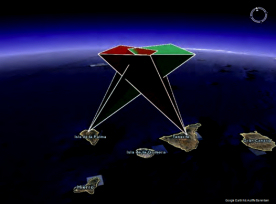 |
| Left: Location of the two CILBO observatories, one on Tenerife and one on La Palma, and (right) the relative fields of view. Credit: ESA | |
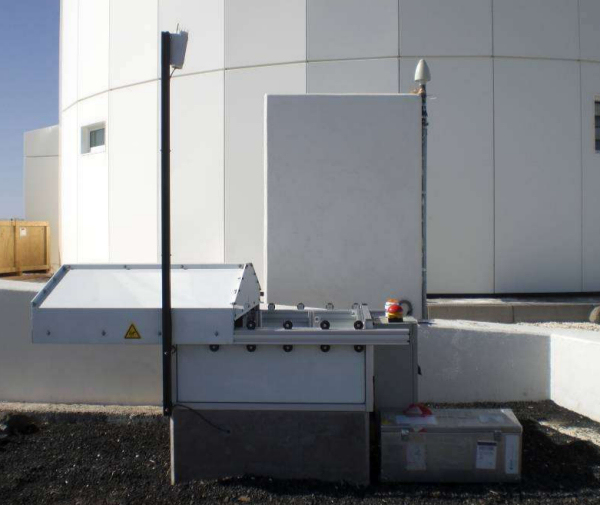 |
| CILBO observatory on Tenerife (with sliding roof opened). Credit: ESA |
OGS (Optical Ground Station) spectrograph
The OGS (Optical Ground Station) spectrograph is situated at the Instituto de Astrofísica de Canarias (IAC) Teide Observatory and was originally built by ESA for tests with laser link and for observations of space debris. In addition to this it is currently being used in support of near-Earth-object searches, various laser tests (including quantum communications), and astronomy observations by the IAC and ESA's Scientific Support Office (SCI-S).
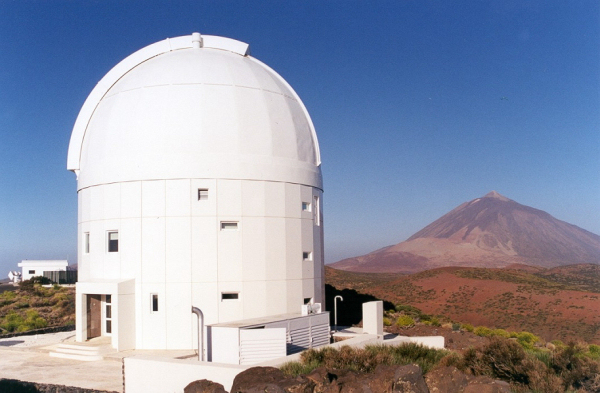 |
| Teide Observatory. Credit: ESA |
The telescope is based on a Zeiss Cassegrain configuration with 13.3 m focal length, but also offers a Coudé focus with a 39 m effective focal length. It is mounted in an English mount configuration, with the hour axis parallel to the Earth's spin axis.
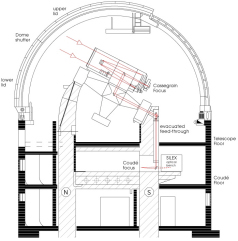 |
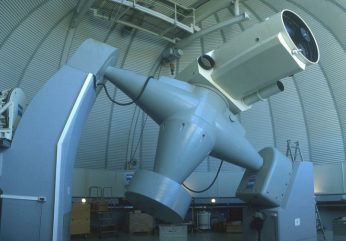 |
| Left: cross-section of the Teide Observatory with the OGS spectrograph at the telescope. Right: The telescope on its mounting. Credit: ESA | |
In support to planetary science studies by scientists of the Scientific Support Office, and specifically observations of comets and eclipsing exoplanets, the office has constructed and commissioned a focal plane instrument providing imaging and dispersive spectroscopy. This spectrograph is attached to the Cassegrain focus of the telescope.
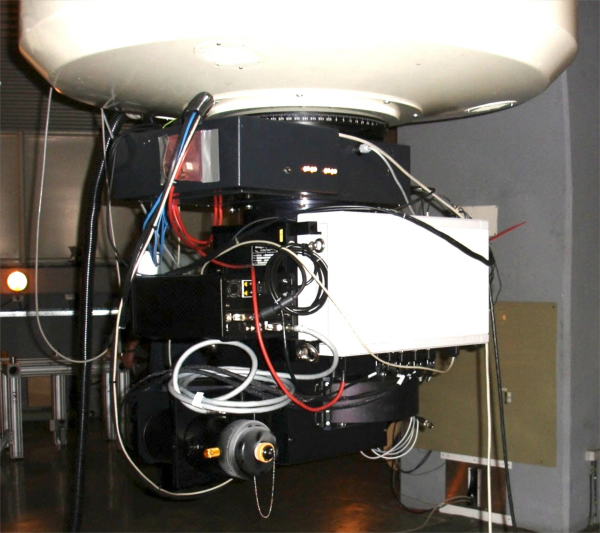 |
| The OGS spectrograph system mounted at the telescope's Cassegrain focus. Credit: ESA |
Imaging spectroscopy is provided with a set of standard broadband filters (UBVRI) of the Bessel-Krone standard, and narrow-band interferometry filters for OH, CN, Ca-II, C3, BC, C2, Na-D, NH2, Hα, and RC emissions. Dispersive spectroscopy can be performed with a set of low-resolution grisms covering the nominal wavelength range from 320 to 1000 nm and resolution (λ/Δλ) between 50 and a few hundred. Filters and grisms can be mounted in two filter wheels with a total of 16 positions. The focal plane instrument is an off-the shelf liquid nitrogen CCD camera with a 2048×2048 back-illuminated CCD.
Operations software was developed combining the control of the OGS telescope and of the spectrograph such that one operator can control the entire setup and can perform astronomy observations. To support extended dispersive exposures an off-axis guiding system has also been developed, which uses the same light path as that for the primary observing target.
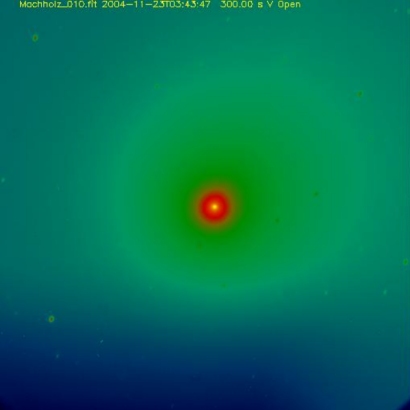 |
| False-colour image of Comet C/2004 Q4 (Machholz) observed with the OGS spectrograph at the Teide Observatory. Credit: ESA |
